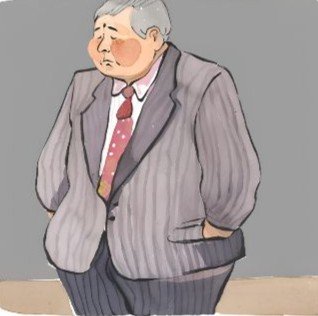1. Introduction
What Happens When Dreams Crumble?
Arthur Miller’s Death of a Salesman is a gut-wrenching portrayal of ambition, failure, and the illusions we build to survive. First performed in 1949[1], it remains one of the most powerful critiques of the American Dream—a dream that promises success to those who work hard yet often delivers heartbreak instead.
Miller knew disappointment firsthand. His parents owned a thriving clothing business, but the Wall Street Crash of 1929 wiped out nearly everything. As a teenager, he delivered bread at dawn to help keep the family afloat. Later, he juggled multiple jobs just to pay his way through the University of Michigan.[2] The Great Depression left its mark on him, shaping his perspective on success and failure. One could argue that Death of a Salesman is rooted in his own memories of watching stability vanish overnight.
But why does this play still resonate today? Because we all know a Willy Loman. He’s the aging colleague who swears his big break is just around the corner. He’s the once-glorified employee who can’t grasp why the phone stopped ringing. He’s the dreamer clinging to an outdated rulebook, convinced that a firm handshake and a winning smile will outmatch shifting markets and ruthless efficiency. At its core, this play isn’t just about one man’s downfall—it’s about the uneasy question lurking in the back of all our minds: Is hard work really enough to succeed?
2. Plot Summary
Willy Loman is a sixty-something traveling salesman who has spent his entire life chasing the American Dream. He firmly believes that being well-liked is the golden ticket to success, but the world around him refuses to play along. As his career crumbles and his grip on reality weakens, he retreats into memories of better days—when he was young, confident, and convinced that greatness was just within reach. Unwilling to let go of his dreams, he shifts his hopes onto his elder son, expecting them to achieve the success that has eluded him.
His wife, Linda, watches helplessly as Willy unravels, caught between her love for her husband and the painful truth of his decline. Meanwhile, his sons, Biff and Happy, struggle under the weight of his expectations. Biff, once a star athlete with a bright future, has been lost ever since uncovering a devastating truth about his father. Happy, in contrast, keeps up the illusion—mirroring Willy’s blind optimism and pretending everything is fine.
At its heart, Death of a Salesman is a tragic collision between dreams and reality. Willy desperately wants to believe he’s special, that his life has meant something. But the world refuses to see him the way he sees himself. And when the burden of failure becomes unbearable, he makes one final, heartbreaking choice—to be useful to his family in the only way he believes he still can.
3. Key Characters
Willy Loman

A tragic figure to the core, Willy is both frustrating and heartbreaking. He’s convinced that charisma and personal connections will lead to success, but he refuses to see that times have changed. As his failures pile up, he clings to delusions of the past, slipping in and out of reality.
Biff Loman

Biff is the emotional heart of the play. He once was a sports hero. He once idolized his father, but after uncovering a shocking his father’s betrayal, he loses faith in everything Willy represents. Unlike his father, Biff seeks the truth—even if it hurts.
Happy Loman

The younger son, Happy, is a smooth talker who echoes Willy’s empty dreams. He is a success with the girls but not good at studying. He never made it to college. He’s eager to prove himself, but deep down, he knows his life lacks meaning. He’s like a mirror reflecting Willy’s worst qualities—full of ambition but lacking purpose.
Linda Loman

The quiet strength of the family, Linda supports Willy no matter what. She sees his pain but enables his illusions, hoping to keep him afloat. Her final monologue—where she tells Willy he is finally free—will stay with you long after the curtain falls.
Ben Loman

Willy’s deceased brother appears in hallucinations, representing everything Willy wishes he could be—wealthy, fearless, and successful. Ben’s famous line, “I walked into the jungle at seventeen and came out at twenty-one. And by God, I was rich,” is the kind of shortcut to success that Willy desperately believes in.
Character Dynamic
At the heart of Death of a Salesman lies the fraught relationship between Willy Loman and his eldest son, Biff. Once the golden boy, Biff was everything Willy had pinned his hopes on—a natural leader, a star athlete, and, in Willy’s eyes, destined for greatness. But the cracks in their bond began long ago when Biff discovered a painful truth about his father that shattered his idealized image of him. Since then, Biff has wandered through life aimless and disillusioned, rejecting Willy’s belief that success is built on charm and connections rather than hard work and self-awareness. Their interactions are tense, filled with unspoken resentment and a desperate longing for understanding. Biff, deep down, still seeks his father’s approval, while Willy clings to the past, unwilling to accept the man his son has become.
Then there’s Happy, the overlooked younger son who has learned to survive by playing along. Unlike Biff, he never questions Willy’s illusions—he embraces them, repeating his father’s empty optimism and chasing shallow successes. He womanizes, brags, and convinces himself that wealth and status are just around the corner. But beneath his confident exterior, there’s a lingering sense of insecurity, a fear that he is no more important than his father was. He wants to be seen, to be admired, but he is trapped in the same cycle of self-deception that has consumed Willy.
Linda, meanwhile, is the quiet force holding the family together. She sees Willy’s struggles more clearly than anyone else, yet she refuses to break his illusions, fearing that stripping them away would destroy him entirely. Her love for Willy is unwavering, even as she watches him spiral. She is patient, loyal, and heart-wrenchingly devoted, but her silence is not weakness—it is endurance. While Willy fights against reality and his sons wrestle with their own identities, Linda stands as the emotional core of the play, carrying the weight of everyone’s pain but rarely sharing her own.
Together, these relationships paint a deeply human portrait of love, disappointment, and the tragedy of misplaced dreams. Each character is caught in the same web of illusions—some clinging to them, others trying to escape—but none entirely free.
4. What to Look For While Reading
Themes
- The Illusion of the American Dream – Willy believes that being well-liked leads to success. The play shows the harsh reality that charm alone doesn’t pay the bills.
- Self-Deception vs. Truth – Willy can’t face reality, while Biff tries to confront it. This battle between illusion and truth drives the entire play.
- Family and Expectations – Willy pushes his dreams onto Biff, who doesn’t want them. Their struggle highlights the gap between generations.
- Mental Health and Despair – The play subtly explores depression and the toll of societal pressure on individuals.
Symbolism
- The Rubber Hose – A chilling reminder of Willy’s suicidal thoughts, representing both his despair and his belief that his life insurance payout is the only thing he has left to give.
- Seeds – Toward the end of the play, Willy plants seeds, symbolizing his desperate attempt to leave something behind. The irony? Nothing grows in his barren backyard—just like his dreams.
- Stockings – Linda mending her stockings reminds Willy of his guilt over an affair. This seemingly small object carries heavy emotional weight.
- Ben’s Success Story -Ben’s mythical journey to riches fuels Willy’s delusions, reinforcing the idea that success is just one lucky breakaway.
Narrative Style
Arthur Miller masterfully blurs the boundaries between past and present in Death of a Salesman, creating a disorienting yet deeply emotional experience. Willy Loman doesn’t just remember the past—he relives it. His flashbacks aren’t structured recollections; they are immersive, almost hallucinatory, moments where he steps entirely into another time. One minute, he’s in his crumbling present, struggling to make ends meet. The next, he’s back in his glory days, convincing himself that success is just around the corner. These shifts happen seamlessly, making it difficult to separate reality from illusion—not just for Willy but for the audience as well.
This technique mirrors the way human memory actually works. We don’t recall the past in a neat, chronological order; instead, emotions trigger flashes of past experiences, often without warning. A scent, a phrase, a disappointment—all can pull us backward in time in an instant. For Willy, these flashbacks are more than nostalgia. They are his way of coping, of rewriting the story in his mind to avoid facing the painful truth: that his life hasn’t turned out the way he always believed it would.
Miller’s use of fragmented time pulls us deep into Willy’s unraveling psyche. We don’t just watch his downfall—we feel it, experiencing his memories as he does, jumping between triumph and regret, hope and despair. This fluid, non-linear storytelling doesn’t just tell Willy’s story; it captures the very essence of human thought—the way we drift between past, present, and expectation, often without realizing it.
5. Takeaway Lessons – Illusion and Delusion
Death of a Salesman is a deeply unsettling reminder of the dangers of chasing illusions. Willy Loman spends his life pursuing a dream that was never truly his own—a vision of success built on charm, reputation, and superficial appeal rather than substance. Like Jay Gatsby reaching for the ever-distant green light, Willy fixates on an ideal that remains out of reach. His failure isn’t just that he doesn’t achieve it; it’s that he never stops to question whether it was the right dream to begin with.
This play forces us to confront an essential question: What does success really mean? Is it wealth? Recognition? Or is it something more internal, something that can’t be measured by status? Marcus Aurelius, the Stoic philosopher, reminds us that external achievements are fleeting, and real peace comes from mastering ourselves[3]. Willy’s tragedy lies in his inability to accept this. He ties his entire sense of worth to an idea of success that is fragile and dependent on forces beyond his control. Instead of adapting, he clings harder, deluding himself into believing that if he just holds on long enough, everything will work out.
Biff, on the other hand, comes to understand a hard but liberating truth: self-awareness matters more than empty ambition. He recognizes that living a lie—no matter how comforting—is ultimately more damaging than facing reality. Meanwhile, Happy, ever the optimist, chooses to inherit his father’s illusions, proving that not everyone is ready to let go of comforting falsehoods.
The lesson? I won’t tell you to become a full-time Stoic, renouncing all ambition in favor of inner tranquility. But one thing is clear: success should be defined on your own terms. Just because a particular path works for someone else doesn’t mean it’s the right one for you. Willy Loman had love, loyalty, and a family that cared for him—but his own expectations too consumed him to see it. If he had valued what he already had instead of chasing an illusion, maybe his story would have ended differently. The real tragedy isn’t just failing to reach a dream—it’s never questioning whether it was the right dream in the first place.
Discussion Questions
- Is Willy a victim of society’s unrealistic expectations, or does he seal his own fate?
- Is the American Dream inherently flawed, or is Willy simply chasing the wrong version of it?
- What does the play say about mental health and how we treat struggling individuals?
6. Final Recommendation
Who Should Read This Book?
If you enjoy character-driven stories that challenge societal norms, this play is for you. It’s a must-read for anyone interested in psychology, family dynamics, or the darker side of ambition.
Final Thoughts
Death of a Salesman isn’t just a play—it’s an emotional gut punch. Willy Loman’s tragic journey is both infuriating and deeply moving. Whether you see him as a victim or a man who refuses to change, his story will stick with you.
Want to explore more classic literature? Keep reading, keep questioning, and keep discovering the stories that shape our world.
[1] Gillian Russo, “The History of ‘Death of a Salesman’ on Broadway,” New York Theatre Guide, June 30, 2022, https://www.newyorktheatreguide.com/theatre-news/news/the-history-of-death-of-a-salesman-on-broadway. Death of a Salesman was first performed at Morosco Theatre on Broadway on February 10, 1949. It was performed 742 times.
[2] “Arthur Miller – Crucible, Plays & Marilyn Monroe,” Biography, August 10, 2023, https://www.biography.com/authors-writers/arthur-miller. Wikipedia showed the manufacturer had 400 employees, but I could not find the source.
[3] Marcus Aurelius, Meditations (The Modern Library, 2003). He explored the idea that genuine peace and tranquility come from within, achieved through self-discipline, rational thinking, and mastery over one’s desires and emotions (Books 4, 6, 8).